Last Casts: Lake Murray
Gagliardi goes deep, Bosley bombs the bank and Carroll finds the mother lode
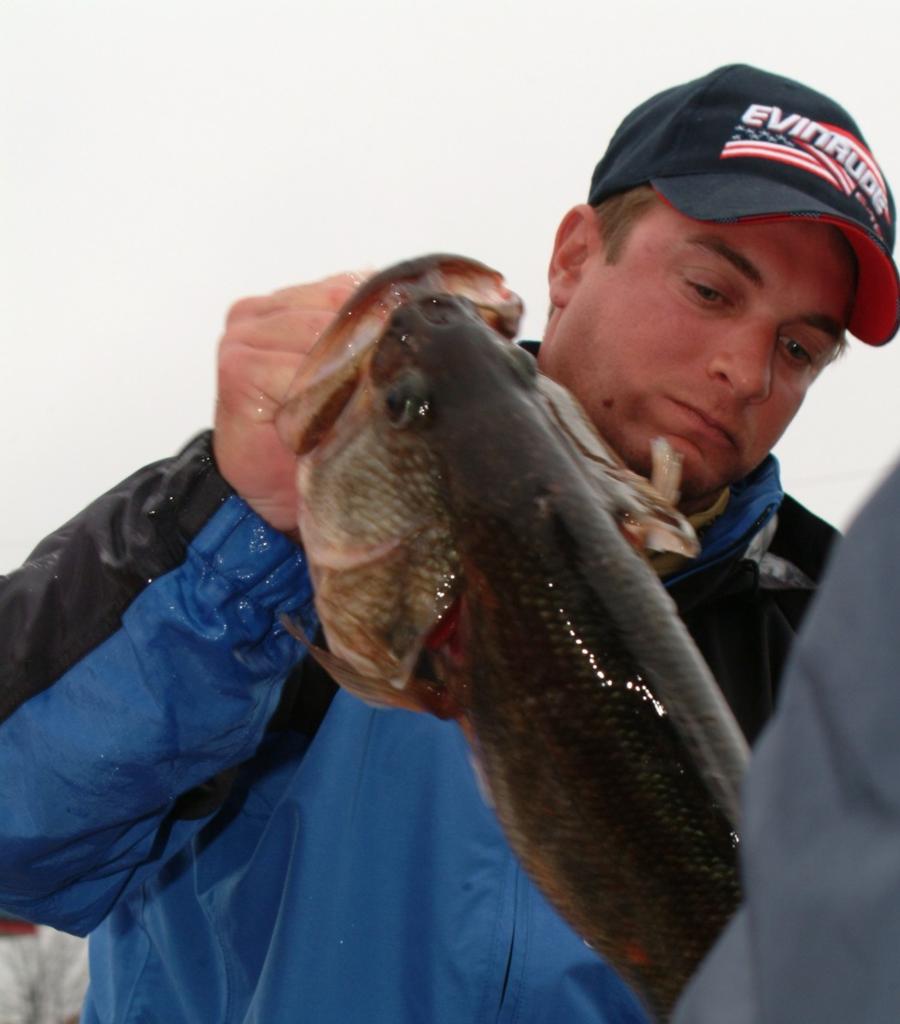
Deep thoughts: FLW Tour pro Anthony Gagliardi is gaining quite a reputation as a deep-water fisherman. Out of five FLW Tour top-10s in the last four years, four of those have come from deep water, including his recent win on Lake Murray and his previous win on Kentucky Lake in 2004.
In fact, both of Gagliardi’s FLW wins were very similar in that a shallow-bite-vs.-deep-bite battle emerged during the tournament. His Kentucky Lake win came in May when fish were postspawn. Some fish were still shallow and some had moved out deep. As a result, the top-10 field became divided between deep crankers and shallow-water hounds. In the end, Gagliardi’s deep pattern bested Greg Hackney’s shallow-water pattern by 5 ounces.
At Murray last week, the top-10 field was again split between shallow and deep. This time it was shallow-water cranking (2 to 7 feet) versus deep-water jigs (20 to 40 feet). And again, Gagliardi had to thwart the serious shallow-water threats of runner-up Brennan Bosley.
“I’ve always felt that my best chance to win these tournaments is through deep-water fishing,” Gagliardi noted. “Especially when there is enough shallow fish to keep half the field on the bank. That way the deep fish aren’t getting pressured as much.”
Gagliardi, who hails from nearby Prosperity, S.C., actually began formulating his Lake Murray winning game plan months ago, even before the water dropped, by spending days on the lake exploring deep drops and sinking brush piles in 30 to 50 feet of water.
“When Murray is down 10 to 12 feet like this, it’s not the same lake; it’s an entirely different fishery in terms of fishing deep,” Gagliardi noted. “The spots I normally fish in 20 to 30 feet of water are now 10 to 20 feet deep, and that’s too shallow. Last fall, when I heard they were going to drop the water again, I got out there and started doing my homework. I wanted to find places and sink brush that would be in that 20- to 30-foot zone when the water was down.”
Not only did his hours of deep-water scouting pay off big, but Gagliardi got a mixed blessing from Mother Nature as well.
“I began checking my brush piles in December, and the fish were already on them good,” he said. “But about the time we were at Okeechobee (for the FLW Tour event), there was a warming trend up here and the fish went to the bank. When I returned to Murray to start practice, everybody was ripping them shallow, and I never expected that. I wasn’t catching any fish off my brush piles, and I was sick.”
But as the practice session wound down, some of the coldest weather of the year moved into the midlands of South Carolina. When the water temperature dropped from the middle 50s into the 40s, the bass started to retreat to their deeper haunts before the start of the tournament.
“In an ironic way, that warming trend kind of helped me,” Gagliardi noted. “Word got out that the shallow cranking bite was hot and that kept a lot of people on the bank during practice.”
What’s more, Gagliardi noted that his deep brush piles weren’t really a factor in the tournament’s earlier days.
“I caught a lot more fish off deep rock the first two days,” he said. “On the third day, I finally caught two fish off the deep brush, and that kind of clued me in that they were starting to get on brush again. On the final day, I did catch more out of deep brush than I had during practice or the first two days of the event.”
Gagliardi fished all over the lake during the tournament.
“I had about 30 deep drops and 49 brush piles from the Gap to the dam and in a few of the creeks,” he said. “When you looked at my GPS map, you couldn’t even see the lake for all the waypoints I had marked.”
Winning lures: Gagliardi’s winning lineup included 1/2-ounce and 1-ounce All Terrain Tackle jigs, a Brian’s Bees B-10 crankbait and a Spot Remover rigged with a finesse worm.
The primary lures were the heavy jigs tied to 20-pound-test Gamma Edge fluorocarbon line. He used them to probe the deeper drops and brush.
“My boat was sitting in anywhere from 30 to 50 feet of water, and I was casting up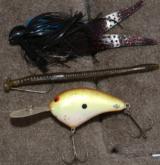 into about 15 feet, with most of the bites coming anywhere between 18 and 30 feet,” he said. “I used the 1/2-ounce when it was calm and the 1-ounce when it got windy.”
into about 15 feet, with most of the bites coming anywhere between 18 and 30 feet,” he said. “I used the 1/2-ounce when it was calm and the 1-ounce when it got windy.”
Gagliardi used the Brian’s Bees B-10 tied to 10-pound Gamma Edge on one shallower-water spot that dropped from 6 to 15 feet.
The Spot Remover was used on the morning of the third day to secure an early limit.
“I used it to get my confidence going,” he said. “I had one place I could a catch a small limit pretty quick, and I wanted to get something in my livewell before I started swinging for the fences.”
Brennan “The Bomber” Bosley: This week Brennan Bosley of Benton, Ark., earned the 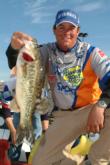 moniker Bomber Bosley. Not only was his bait of choice a classic Deep Flat A Bomber crankbait in crystal crawfish and hand-painted red colors, but Bosley ran a shallow run-and-gun pattern similar to a bombing run.
moniker Bomber Bosley. Not only was his bait of choice a classic Deep Flat A Bomber crankbait in crystal crawfish and hand-painted red colors, but Bosley ran a shallow run-and-gun pattern similar to a bombing run.
“I was flying by the seat of my pants, fishing water that fit my pattern, some of which I’d never even seen before,” Bosley said. “I’d run down the lake looking for my specific target, rock banks that had just the right angle with a little wind blowing on them, and I’d `bomb’ them with the crankbait.”
Bosley spent the tournament week fishing natural rock structures in 7 to 9 feet of water near the dam. With his boat sitting over 12 feet of water, he would make long casts to steeper, rock-laden channel swings in the bank.
“A lot of the banks near the dam are flat, slick clay banks,” he observed. “But every once and a while, I’d see a big boulder or rockslide on the shore with a little more steepness to the bank. If there was any wind blowing onto that kind of place, that was the ticket. All I had to do was get my crankbait to contact something, anything – usually a rock pile – and it was an automatic bite.”
Actually, Bosley got off to a slow start on day one with just 11 pounds, 5 ounces, but 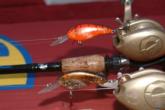 it was the wind that helped him bust the big strings over the next three days.
it was the wind that helped him bust the big strings over the next three days.
“That first day it was sunny and calm and my bite was not as strong,” he noted. “Every fish I caught was barely hooked on the back treble, and I lost two giants that day. But when that nasty little front blew through on Thursday bringing clouds and wind, it was a whole different ballgame: Every fish choked on that Flat A – I had to perform surgery to get the bait out of their throats.
Carroll’s cache: To say the least, Tim Carroll had a “breakout” week at Lake Murray. While enjoying his first top-10 on the FLW Tour, the reserved pro from Owasso, Okla., took the opportunity to break the single-day heaviest five-fish catch ever recorded in FLW Tour history with 30 pounds, 15 ounces.
So just how did he find the mother lode?
During practice Carroll was working on a shallow cranking pattern along Murray’s main-lake points and islands when he stopped for a few minutes to make some tackle adjustments.
“I sat down to work on tackle, and my boat drifted out away from the bank,” Carroll recalled. “When I stood up to troll back to the shoreline, I looked down and my Lowrance graph was lit up with dozens of really big `hook echoes.'”
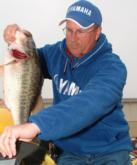 Based on the size of the “hooks” on the graph, Carroll figured he was sitting over a school of stripers suspended in about 20 feet of water.
Based on the size of the “hooks” on the graph, Carroll figured he was sitting over a school of stripers suspended in about 20 feet of water.
Wondering if stripers would bite a jig, Carroll pitched one overboard and let it fall to the bottom.
“As soon as it hit the bottom, the line went `thump.'” he continued. “I set the hook, and whatever I had on made one run and snapped my 17-pound line.”
Thinking he was going to tangle with giant stripers, Carroll tied on another jig and backed the drag down on his reel.
“I pitched out there again, got another bite and thought, `Man, those are some aggressive stripers!`”
This time the fish began stripping drag. After several hard, deep pulls, the fish made an upward charge and broke the surface.
“It was an 11-pound largemouth,” he gasped. “I just about passed out.”
Needless to say, Carroll quickly abandoned his shallow cranking pattern and began searching Murray’s deeper waters for schools of giant bass.
“I found about four or five more places just like that: steep vertical drops in 24 to 26 feet of water,” he said. “Most of the time my boat was sitting in 36 to 38 feet, and I was casting up into 23 or 24 feet.
“But that first place I found was responsible for my 28-pound sack on day one and the 31 pounds on the final day.”
Carroll’s primary lures were a 3/4-ounce PJ’s football-head jig with a brown skirt and green-pumpkin twin-tail trailer fished on 17-pound-test Bass Pro Shops fluorocarbon as well as an 8-inch Yamamoto grub rigged with a 3/8-ounce bullet weight on 14-pound-test fluorocarbon.
Pattern Fishing 101: If you have ever wondered what pattern fishing is in bass fishing, pack your rods and go to Lake Murray for a few days. Unlike natural lakes and river systems, which tend to be more area oriented, Murray is a true pattern lake.
Murray is a typical man-made impoundment that features two main rivers and several major creek arms. The water at the dam is clear, and as you travel up the rivers or creek arms, the water becomes more stained. The bank line varies from flat sand to gravel to clay and chunk rock. When the water is up, docks and piers are plentiful as well.
But it’s the numbers of bass and their predictability that make Lake Murray such a true pattern lake.
“Once you define a few key characteristics of what the fish are using, you can literally ride down the lake and duplicate it elsewhere,” noted Dave Wolak of Warrior Run, Pa., who fished deep last week to finish fourth.
Lake Murray’s top five lures: Medium-running crankbaits of all types saw the most action last week at Murray. Some of the top performers included Rapala Shad Raps, Bomber Model A’s, rattling lipless crankbaits, Speed Traps and Bandit Series 200 crankbaits.
In the deep end, heavy 1/2- to 1-ounce jigs dragged along steep, rocky bottoms took a lot of the big fish. Several co-anglers reported catching their fish on finesse jigheads and drop-shots.
Points watch: After starting the season in the top 10 at Okeechobee, Tommy Biffle,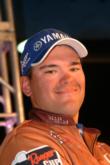 Mark Hardin and Dale Teaney dropped clean out of the top 48 in the points standings by crashing and burning at Murray.
Mark Hardin and Dale Teaney dropped clean out of the top 48 in the points standings by crashing and burning at Murray.
Meanwhile, Dave Wolak and Japanese pro Furusawa Katsu offset their miserable starts at Okeechobee with top-10s at Murray and moved into the potential Championship Bracket. Other pros recovering from slow starts at Okeechobee and moving into the top 48 with strong finishes at Murray included Clark Wendlandt, Dan Morehead and Steve Kennedy.
The overall points lead is now maintained by Ralph Laster of Lees Summit, Mo., who finished 13th at Lake Okeechobee and 11th at Lake Murray.
Still going: One would think that after winning $200,000, Lake Murray winner Anthony Gagliardi would enjoy a few days off, right? Nope. Gagliardi is on his way to West Point Lake to fish the second event of the Southeast Division Stren Series, which starts Wednesday.